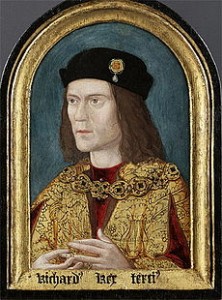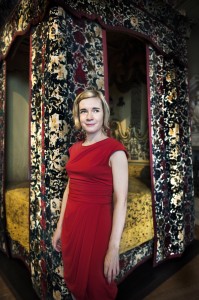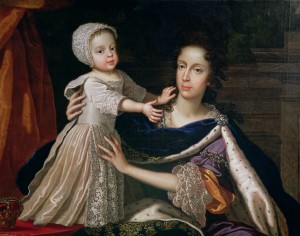
Although King Henry VIII and his daughter Queen Elizabeth I are two of the most famous monarchs in English history, knowledge of their lives and reigns varies among visitors to their palaces, birthplaces and collections. There are visitors passionate about the Tudor history who consult comprehensive guides to Tudor sites, such as In the Footsteps of Anne Boleyn, to ensure that they absorb as much knowledge about these famous Kings and Queens as possible.
There are visitors who have encountered the Tudors through popular culture such as the The Tudors TV series or historical novels such as Hilary Mantel’s Wolf Hall or Philippa Gregory’s The Other Boleyn Girl and know a mixture of fact and legend about them. Then, there are visitors who know the names of Tudor monarchs and little else, unsure about the number of Henry VIII’s wives or the influence of all those advisers named Thomas. In The Tudor Tutor: Your Cheeky Guide to the Dynasty, Barb Alexander provides an entertaining and informative introduction to the Tudor Dynasty that should be required in-flight reading for any tourist bound for England’s Tudor trail of historic sites.
One of the great strengths of The Tudor Tutor: Your Cheeky Guide to the Dynasty is the vivid descriptions of Henry VIII’s wives (or Henry’s half dozen as they are described in the book). For those with only a passing knowledge of sixteenth century England, Catherine of Aragon, Anne Boleyn, Jane Seymour, Anne of Cleves, Katherine Howard and Catherine Parr blend together or are reduced to unhelpful stereotypes. (In Six Wives: The Queens of Henry VIII, historian David Starkey summarized these simplistic portrayals as “the saint, the schemer, the doormat, the dim fat girl, the sexy teenager and the bluestocking”).
Alexander challenges the stereotypes by giving the reader a sense of the nuanced personalities of all six queens. Catherine of Aragon was pious but she was also a “hands-on queen” who served as Henry VIII’s regent while he was fighting wars in France. Katherine Howard’s time as queen ended in a royal scandal but she was also generous and charitable, providing the elderly Countess of Salisbury with warm clothes when the Countess was imprisoned in the Tower of London. Alexander does an excellent job of explaining the complicated religious politics of the time to those who may be unfamiliar with the full history, matching each wife of Henry VIII to her faith. (Anne Boleyn is entertainingly described as “reformation curious.”) The book is richly illustrated with art by Lisa Graves, giving a sense of fashions of sixteenth century England.
The welcome page asks readers to “Please leave your desire for indoor plumbing, antibiotics and good dental care behind” and a little more information about the day to day lives of Tudor courtiers amidst the religion and politics would have made the book even more engaging for readers new to the time period. Nevertheless, The Tudor Tutor: Your Cheeky Guide to the Dynasty will ensure that more visitors arrive at the Tower of London, Greenwich and Hampton Court knowing the key details about the lives and reigns of England’s Tudor monarchs.













